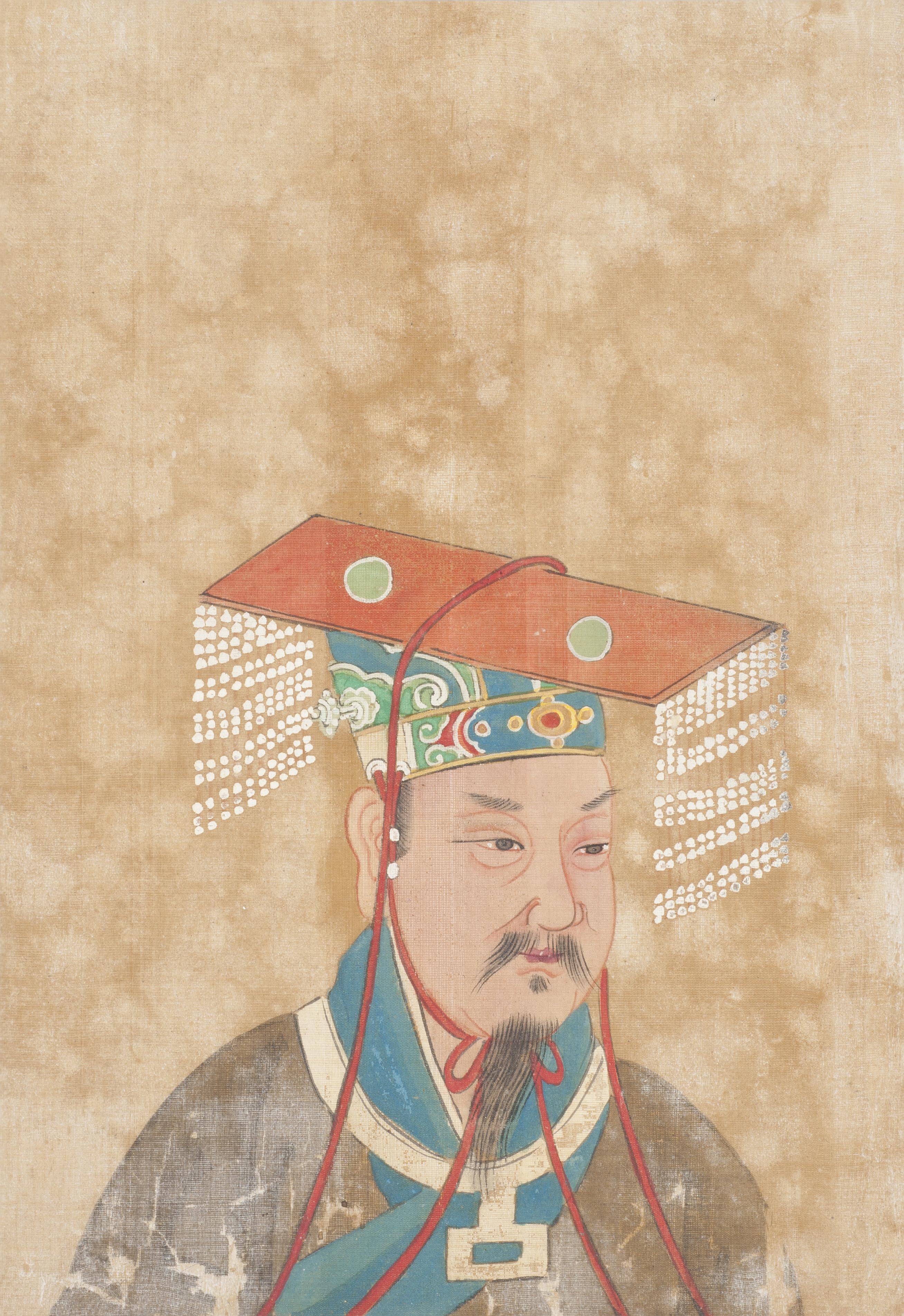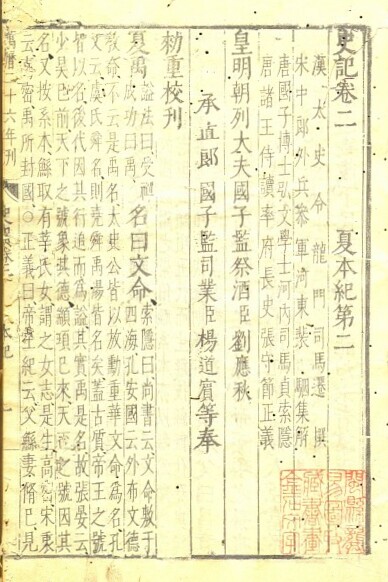|
Yan (state)
Yan (; Old Chinese pronunciation: ''*'') was an ancient Chinese state during the Zhou dynasty. Its capital was Jicheng (Beijing), Ji (later known as Yanjing and now Beijing). During the Warring States period, the court was also moved to another capital at Xiadu at times. The history of Yan began in the Western Zhou in the early first millennium BC. After the authority of the Zhou king declined during the Spring and Autumn period in the 8th century BC, Yan survived and became one of the strongest states in China. During the Warring States period from the 5th to 3rd centuries BC, Yan was one of the last states to be conquered by the armies of Qin Shihuang: Yan fell in 222 BC, the year before the declaration of the Qin dynasty, Qin Empire. Yan experienced a brief period of independence after the collapse of the Qin dynasty in 207 BC, but it was eventually absorbed by the victorious Western Han dynasty, Han. During its height, Yan stretched from the Yellow River to the Yalu River ... [...More Info...] [...Related Items...] OR: [Wikipedia] [Google] [Baidu] |
Zhou Dynasty
The Zhou dynasty ( ) was a royal dynasty of China that existed for 789 years from until 256 BC, the longest span of any dynasty in Chinese history. During the Western Zhou period (771 BC), the royal house, surnamed Ji, had military control over territories centered on the Wei River valley and North China Plain. Even as Zhou suzerainty became increasingly ceremonial over the following Eastern Zhou period (771–256 BC), the political system created by the Zhou royal house survived in some form for several additional centuries. A date of 1046 BC for the Zhou's establishment is supported by the Xia–Shang–Zhou Chronology Project and David Pankenier, but David Nivison and Edward L. Shaughnessy date the establishment to 1045 BC. The latter Eastern Zhou period is itself roughly subdivided into two parts. During the Spring and Autumn period (), power became increasingly decentralized as the authority of the royal house diminished. The Warring States ... [...More Info...] [...Related Items...] OR: [Wikipedia] [Google] [Baidu] |
Qin Dynasty
The Qin dynasty ( ) was the first Dynasties of China, imperial dynasty of China. It is named for its progenitor state of Qin, a fief of the confederal Zhou dynasty (256 BC). Beginning in 230 BC, the Qin under King Ying Zheng engaged in a Qin's wars of unification, series of wars conquering each of the rival states that had previously pledged fealty to the Zhou. This culminated in 221 BC with the successful unification of China under Qin, which then assumed an imperial prerogativewith Ying Zheng declaring himself to be Qin Shi Huang, the first emperor of China, and bringing an end to the Warring States period (221 BC). This state of affairs lasted until 206 BC, when the dynasty collapsed in the years following Qin Shi Huang's death. The Qin dynasty's 14-year existence was the shortest of any major dynasty in Chinese history, with only two emperors. However, the succeeding Han dynasty (202 BC220 AD) largely continued the military and administ ... [...More Info...] [...Related Items...] OR: [Wikipedia] [Google] [Baidu] |
Liulihe Township
Liulihe Town () is a town in Fangshan District, Beijing. It borders Shilou, Doudian and Changyang Towns in its north, Beizangcun and Pangezhuang Towns in its east, Zhuolu City in its south, and Hangcunhe Town in its west. In the year 2020, its total population was 66,787. The name Liulihe () comes from the Liuli River that passes through the town. History Administrative divisions In 2021, Liulihe Area oversaw 52 subdivisions, which can be further classified into 5 communities and 47 villages A village is a human settlement or community, larger than a hamlet but smaller than a town with a population typically ranging from a few hundred to a few thousand. Although villages are often located in rural areas, the term urban village ...: Landmark * Western Zhou Yan State Capital Museum See also * List of township-level divisions of Beijing References External linksOfficial Government website (in Chinese) {{authority control Fangshan District Areas of Beijing ... [...More Info...] [...Related Items...] OR: [Wikipedia] [Google] [Baidu] |
Battle Of Muye
The Battle of Muye, Mu, or Muh () was fought between forces of the ancient Chinese Shang dynasty led by King Zhou of Shang and the rebel state of Zhou led by King Wu. The Zhou defeated the Shang at Muye and captured the Shang capital Yin, marking the end of the Shang and the establishment of the Zhou dynasty—an event that features prominently in Chinese historiography as an example of the Mandate of Heaven theory that functioned to justify dynastic conquest throughout Chinese history. Background By the 12th century BC, Shang influence extended west to the Wei River valley, a region that was occupied by clans known as the Zhou. King Wen of Zhou, the ruler of the Zhou and vassal of the Shang king, was given the title "Overlord of the West" by Di Xin of Shang (King Zhou). Di Xin used King Wen to guard his rear while he was involved in a south-eastern campaign. Eventually, Di Xin came to fear King Wen's growing power and imprisoned him. Although Wen was later release ... [...More Info...] [...Related Items...] OR: [Wikipedia] [Google] [Baidu] |
King Zhou Of Shang
King Zhou (; ) was the pejorative posthumous name given to Di Xin of Shang () or Shou, King of Shang (), the last king of the Shang dynasty of ancient China. He is also called Zhou Xin (). In Chinese, his name Zhòu ( 紂) also refers to a horse crupper, the part of a saddle or harness that is most likely to be soiled by the horse. It is not to be confused with the name of the succeeding dynasty, which has a different character and pronunciation (). In later times, the story of King Zhou became a cautionary tale on what could befall a kingdom if its ruler gave into corruption and moral depravity. Names Di Xin is the official title given by the Shang dynasty imperial house. Di Xin was born with the family name Zi, lineage name Yin, and the given name Shou. He was called Shou, King of Shang by the kingdom of Zhou when he was alive. After his death, he was given a derogatory posthumous name, King Zhou of Shang () by the succeeding Zhou dynasty, with Zhou () meaning "horse cr ... [...More Info...] [...Related Items...] OR: [Wikipedia] [Google] [Baidu] |
King Wu Of Zhou
King Wu of Zhou (; died ), personal name Ji Fa, was the founding king of the Chinese Zhou dynasty. The chronology of his reign is disputed but is generally thought to have begun around 1046 BCE and ended with his death three years later. King Wu was the second son of Ji Chang (posthumously King Wen) and Tai Si. In most accounts, his older brother Bo Yikao was said to have predeceased his father, typically at the hands of King Zhou of Shang, the last king of the Shang dynasty; in the '' Book of Rites'', however, it is assumed that his inheritance represented an older tradition among the Zhou of passing over the eldest son. (Fa's grandfather Jili had likewise inherited Zhou despite two older brothers.) Upon his succession, Fa worked with his father-in-law Jiang Ziya to accomplish an unfinished task: overthrowing the Shang dynasty. During the ninth year of his reign, Fa marched down the Yellow River to the Mengjin ford and met with more than 800 dukes. He constructed an ... [...More Info...] [...Related Items...] OR: [Wikipedia] [Google] [Baidu] |
Records Of The Grand Historian
The ''Shiji'', also known as ''Records of the Grand Historian'' or ''The Grand Scribe's Records'', is a Chinese historical text that is the first of the Twenty-Four Histories of imperial China. It was written during the late 2nd and early 1st centuries BC by the Han dynasty historian Sima Qian, building upon work begun by his father Sima Tan. The work covers a 2,500-year period from the age of the legendary Yellow Emperor to the reign of Emperor Wu of Han in the author's own time, and describes the world as it was known to the Chinese of the Western Han dynasty. The ''Shiji'' has been called a "foundational text in Chinese civilization". After Confucius and Qin Shi Huang, "Sima Qian was one of the creators of Imperial China, not least because by providing definitive biographies, he virtually created the two earlier figures." The ''Shiji'' set the model for all subsequent dynastic histories of China. In contrast to Western historiographical conventions, the ''Shiji'' does no ... [...More Info...] [...Related Items...] OR: [Wikipedia] [Google] [Baidu] |
Sima Qian
Sima Qian () was a Chinese historian during the early Han dynasty. He is considered the father of Chinese historiography for the ''Shiji'' (sometimes translated into English as ''Records of the Grand Historian''), a general history of China covering more than two thousand years from the rise of the legendary Yellow Emperor and formation of the first Chinese polity to the reign of Emperor Wu of Han, during which Sima wrote. As the first universal history of the world as it was known to the ancient Chinese, the ''Shiji'' served as a model for official histories for subsequent dynasties across the Sinosphere until the 20th century. Sima Qian's father, Sima Tan, first conceived of the ambitious project of writing a complete history of China, but had completed only some preparatory sketches at the time of his death. After inheriting his father's position as court historian in the imperial court, he was determined to fulfill his father's dying wish of composing and putting together th ... [...More Info...] [...Related Items...] OR: [Wikipedia] [Google] [Baidu] |
Beijing Capital Museum
The Capital Museum () is an art museum in Beijing, China. It opened in 1981 and moved into its present building in 2006, which houses a large collection of ancient porcelain, bronze, calligraphy, painting, jade, sculpture, and Buddhist statues from imperial China as well as other Asian cultures Part of the museum's collections were formerly housed in the Confucius Temple on Guozijian Road in Beijing. Overview The Beijing Capital Museum today contains over 200,000 cultural relics in its collection. . Only a small fraction of the collection is exhibited, and a significant percentage of the museum's art collection comprises artifacts unearthed in Beijing. The Capital Museum was established in 1981 with a collection of some 83,000 objects. Although the museum pales in ... [...More Info...] [...Related Items...] OR: [Wikipedia] [Google] [Baidu] |
Liaodong Peninsula
The Liaodong or Liaotung Peninsula ( zh, s=辽东半岛, t=遼東半島, p=Liáodōng Bàndǎo) is a peninsula in southern Liaoning province in Northeast China, and makes up the southwestern coastal half of the Liaodong region. It is located between the mouths of the Daliao River (the historical lower section of the Liao River) in the west and the Yalu River in the east, and encompasses the territories of the whole sub-provincial city of Dalian and parts of prefectural cities of Yingkou, Anshan and Dandong. The word "Liaodong" literally means "Liao region's east", referring initially to the Warring States period Yan commandery of Liaodong, which encompassed an area from modern Liaoning-Jilin border in the north to the Chongchon River on the Korean Peninsula in the south, and from just east of the Qian Mountains to a now-disappeared large wetland between the western banks of middle Liao River and the base of Yiwulü Mountain, historically known as the "Liao Mire" ( ... [...More Info...] [...Related Items...] OR: [Wikipedia] [Google] [Baidu] |
Shanxi
Shanxi; Chinese postal romanization, formerly romanised as Shansi is a Provinces of China, province in North China. Its capital and largest city of the province is Taiyuan, while its next most populated prefecture-level cities are Changzhi and Datong. Its one-character abbreviation is (), after the Jin (Chinese state), state of Jin that existed there during the Spring and Autumn period (). The name ''Shanxi'' means 'west of the mountains', a reference to its location west of the Taihang Mountains. Shanxi borders Hebei to the east, Henan to the south, Shaanxi to the west and Inner Mongolia to the north. Shanxi's terrain is characterised by a plateau bounded partly by mountain ranges. Shanxi's culture is largely dominated by the ethnic Han Chinese, Han majority, who make up over 99% of its population. Jin Chinese is considered by some linguists to be a distinct language from Mandarin and its geographical range covers most of Shanxi. Both Jin and Mandarin are spoken in Shanxi. ... [...More Info...] [...Related Items...] OR: [Wikipedia] [Google] [Baidu] |







